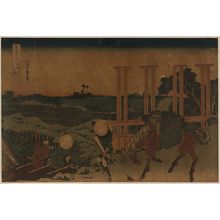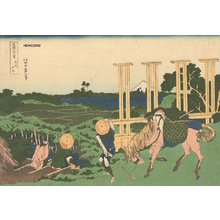葛飾北斎による浮世絵「Senju in Musashi Province」
作者:葛飾北斎
作品名:Senju in Musashi Province
制作年:c. 1830 - 1834
詳細:詳細情報...
情報源:ホノルル美術館
浮世絵(全 5,476 件)を表示...
説明:
The print represents a view of Mount Fuji from Senju, the northern suburb of Edo. The river, which rises in the Kantö Mountains, changes name over its course. In this area, some miles upstream, it was called the Arakawa River. Fuji is seen here across the Arakawa beyond rice fields in the middle ground. Although not represented in the print, the so-named Great Bridge spanned the Arakawa at Senju, where the highway to Mutsu province in the far north originated. Senju was thus a gateway to the north, with its streets full of inns, shops, restaurants, and travelers. In the foreground, on the bank of a canal leading to Arakawa, a horseman appears, leading his aging, tired horse. Momentarily he gazes at the beautiful cone of Fuji. Two seated men are fishing at the edge of the canal. Hokusai's usual geometric treatment of his composition is obvious in this print. The horse's bent stance resembles the triangle of Fuji, and the weighted rein draws a line that echoes the rise and fall of the rounded hills. The rectangular elements of the flood-gate (suimon) rise to make a screen for the river and for Fuji. The print is also evocative; one cannot help feeling empathy for the tired horse. The turtle, its tail tied to the rein, may be one that the horseman caught on the way to take home as his children’s pet. The key-block was printed in blue. (The Asian Art Museum of San Francisco, HOKUSAI AND HIROSHIGE – Great Japanese Prints from the James A. Michener Collection, Honolulu Academy of Arts: The Asian Art Museum of San Francisco, 1998 Page 61. Cat. 12) - - - - - - - - - - - - Senju was an important suburb of Edo, and a departure point for journeys to the north. As a result, it was a bustling district filled with shops providing services to travelers. However, Hokusai shows an out-of-the-way corner with a view looking out beyond rice fields to the Arakawa (Ara River) and Mount Fuji in the distance. Sitting above a canal, two fishermen look out over the expanse, joined by a man leading his tired horse past a floodgate that frames the volcano. The hapless turtle tied to the horse’s rein might be intended as a gift for the man’s children. Hokusai used the strong vertical lines of the floodgate to prevent his landscape from becoming flat. He often employed devices such as this to emphasize the distance between the foreground and the view in the distance. “Hokusai’s Summit: Thirty-six Views of Mount Fuji” (09/24/2009-01/06/2010) ******************************
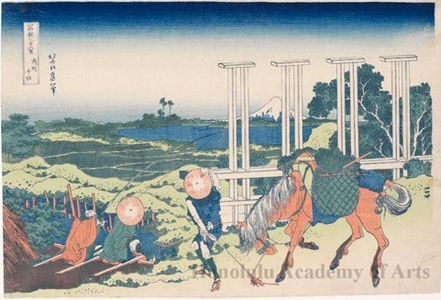
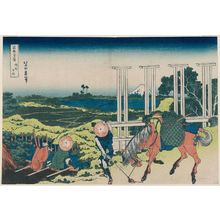
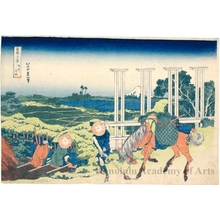
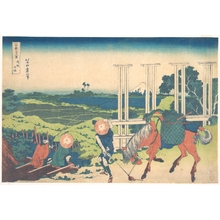
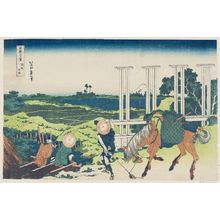
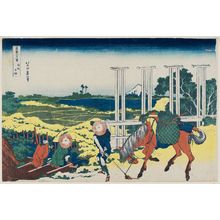
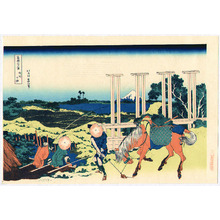
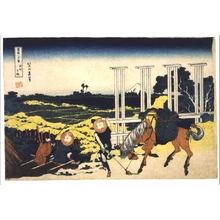
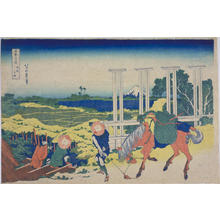
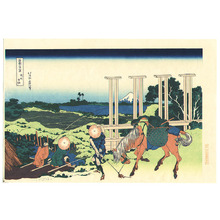
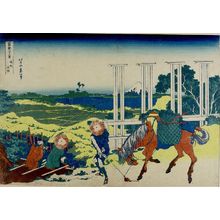
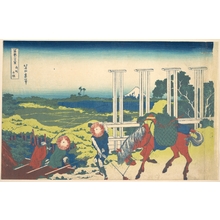
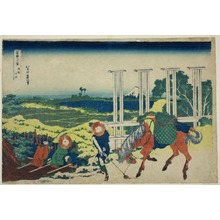

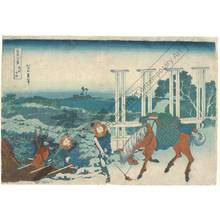
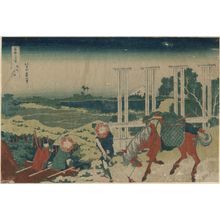
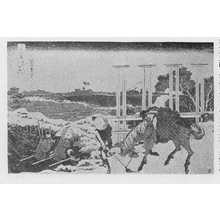

![Bushu Senju 武州千住 (Senju in Musashi Province [Edo]) / Fugaku sanju-rokkei 冨嶽三十六景 (Thirty-Six Views of Mt Fuji) Katsushika Hokusai, 葛飾北斎 (Katsushika Hokusai (葛飾北斎))による浮世絵「Bushu Senju 武州千住 (Senju in Musashi Province [Edo]) / Fugaku sanju-rokkei 冨嶽三十六景 (Thirty-Six Views of Mt Fuji)」](https://data.ukiyo-e.org/bm/thumbs/AN00144033_001_l.jpg)
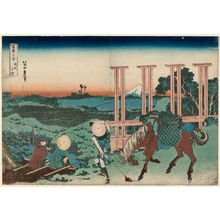
![[Bushū senju] Katsushika Hokusai, 葛飾北斎 (Katsushika Hokusai)による浮世絵「[Bushū senju]」](https://data.ukiyo-e.org/loc/thumbs/02472v.jpg)
